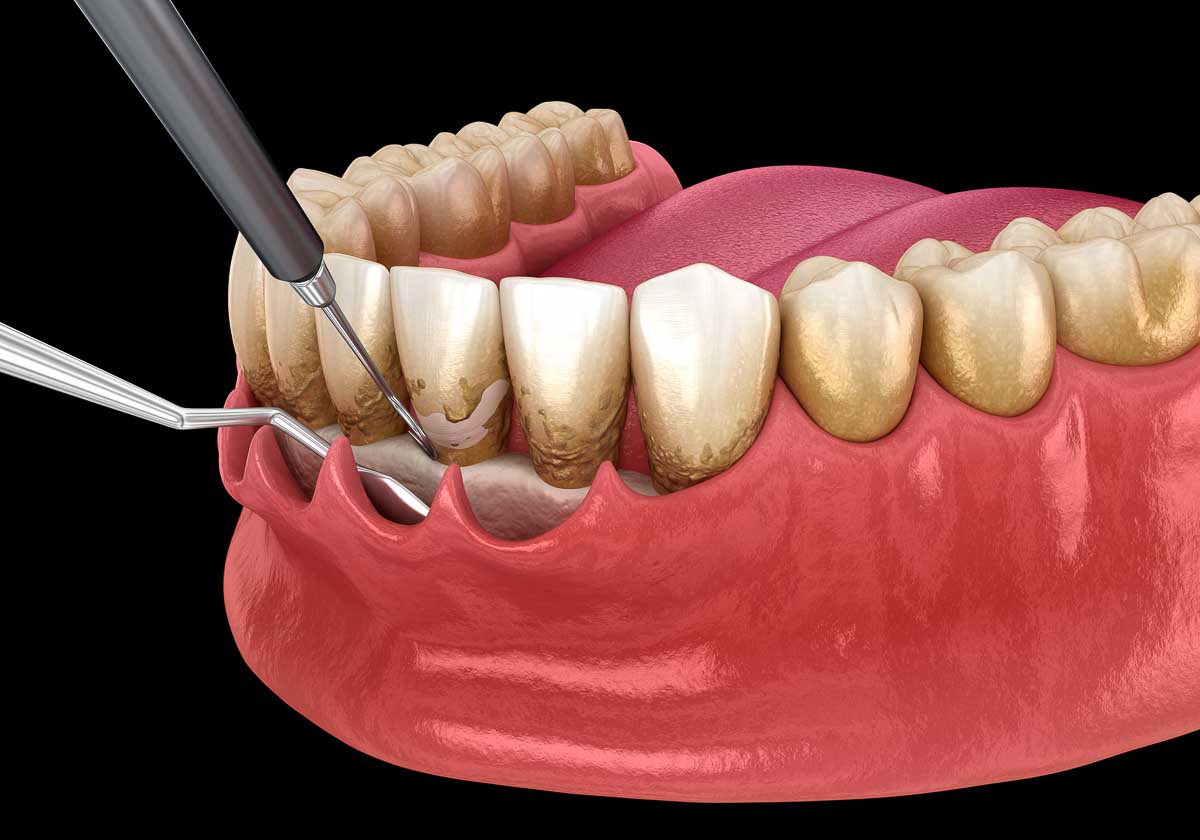

The most under-diagnosed dental disease is periodontal or gum disease. It is a silent, incipient and often dangerous dental condition. Patients often tell me that they have this disease ‘in their family’. Although genetics does play a role in periodontal disease, it is often the lack of good dental follow up that lands folks in trouble. Not surprisingly, as I have mentioned, this form of dental disease is silent and subtle. It can go on for years without dramatic clues as to what is going on.
When gum disease is classified as ‘mild’, we perform a modified cleaning which may require some form of local or topical anesthesia.
When it is classified as ‘moderate’ or ‘advanced’, we will treat it with a procedure called ‘Scaling’. This is where we anesthetize the areas to be treated and the professional hygienist will delicately remove the hard calculus and the film of bacteria that is on the teeth and roots. She will use hand instruments as well as an ultrasonic device with sterile water irrigation. Occasionally and when it is indicated for the benefit of the patient, we may place some medicament or antibiotic under the gum to support the healing and promote cell regeneration. We will recommend some specific store-bought devices to aid in the maintenance of your now very clean gums.
The protocols for treating gum disease are set by the American Academy of Periodontology. In cases of advanced gum disease, we may encourage you to seek the opinion of a specialist.
Once you have completed your course of periodontal ‘Scaling’ which is usually a couple of appointments, we will schedule you for a four-week follow-up. The gums are measured again to quantify the actual improvement. You will become quite learned in this process. So many of our patients, who have gone through this process, will inquire about specifics because they are engaged and informed at every step. We love the questions! Following the one-month reevaluation and maintenance cleaning, you will be placed on a three-month re-care. This is where you get a professional cleaning and we monitor your progress for an entire year. After the year mark, and if all is going well, you may be placed on a more extended re-care program where we will see you every four to six months.
Patients often ask if this procedure ‘will hurt’. At our dental practice, we hate pain! Every method of anesthesia and analgesic medication is utilized to make you comfortable both during and after your treatment. We know how stressful a dental visit is for so many people and we are here to hold your hand through it all.
